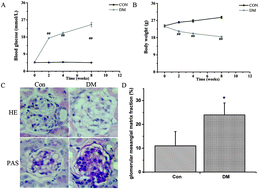Autophagy is involved in regulating VEGF during high-glucose-induced podocyte injury
Abstract
Podocytes are the major sites of vascular endothelial growth factor (VEGF) production in kidneys. Over-expression of VEGF is involved in the pathogenesis of diabetic nephropathy (DN), and an emerging body of evidence suggests that autophagy plays an important role in DN. In this study, the effect of autophagy on over-expressed VEGF along with its underlying mechanism was investigated in streptozotocin (STZ)-induced diabetic mice and high glucose (HG)-induced podocytes. We found that diabetes caused podocyte foot process effacement and VEGF upregulation significantly. In vitro, high glucose induced VEGF and reduced the podocyte viability. After treatment with rapamycin in podocytes, an autophagy inducer, VEGF activation was significantly abrogated and podocyte injury was ameliorated. In contrast, podocytes treated with 3-methyladenine (3-MA), a potent autophagy inhibitor, had increased VEGF expression. Furthermore, 3-MA significantly increased the production of HG-induced reactive oxygen species (ROS), whereas rapamycin decreased the cellular ROS level. Inhibition of ROS production by N-acetyl-L-cysteine (NAC) effectively reduced the over-expression of VEGF. These studies show the vital role of autophagy in the regulation of VEGF, which presents a protective effect on HG-induced podocyte injury. ROS production may be an important mechanism for mediating this process.

- This article is part of the themed collection: Chemical Biology in Molecular BioSystems

 Please wait while we load your content...
Please wait while we load your content...